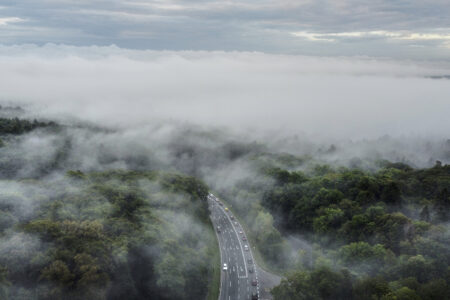Reflections in Nature: All that humans have learned has come from nature
Last Sunday at our church, the congregation sang my favorite hymn: “The Hymn of Promise.”
The first verse goes like this:
“In the bulb there is a flower, in the seed, an apple tree,
“In co-coons, a hidden promise, butterflies will soon be free!
“In the cold and snow of winter. There’s a spring that waits to be
“Un- revealed until its season, something God alone can see.”
Although we cannot see God, we have faith that he exists. Faith is defined as believing in something you cannot see. “Faith is the bird that sings to the dawn while it is still dark.” (Kabir)
There are many that are seeking proof that God exists. They are looking for this proof in his creation. We know that God will not reveal himself in this way. We have faith that he exists, and he has told us, “Those who have not seen me and believe have the strongest faith of all.”
Although we have not seen God we have seen his handiwork in his creation. Our Daily Bread, Guidepost and church bulletin often show a nature scene, perhaps a sunset, woodland ablaze in fall colors or the beauty of a snow-covered mountain. The picture will always be accompanied by a verse of scripture.
We need to be thankful for this creation that God made just for us.
At the very beginning of the Bible, God tells us that he made all the creatures of the sea, all the birds, all the cattle, all the creeping things, and all the beasts of the Earth for us. Then he told us that we had dominion over the fish of the sea, over the birds of the air, and over every living thing that moves upon the earth. We were to use these creatures, take care of them, and learn from them.
Humans first used the birds and animals in a very basic way. We used them to feed and clothe ourselves. Humans have always been intrigued by God’s wild creatures. Our first attempts to record his history were drawings of animals and birds on cave walls.
Humans have always been watching and studying animals. We noticed that some wild birds went south to warmer weather at certain times of the year. By watching these birds, we learned that the seasons were going to change and that we also needed to go to a warmer place.
Eventually, humans noticed that not all animals moved south. Those that remained in the north for the winter had grown warmer pelts, made dens to protect themselves from the cold and stored food for the coming months. Humans learned that some animals have heavy fur on their toes, which enables them to walk on top of deep snow and gives protection from the cold. This spurred early humans to invent snowshoes.
Humans learned to fly by watching birds. Many attempts were made to fly, however, it wasn’t until we discovered that birds tipped their wings to fly higher or lower that we were able to master flight by putting flaps on airplanes.
Humans learned that we could watch the stars and predict the coming of the changing seasons. Humans also found that we could travel long distances without getting lost, by watching the stars. We studied the sun and the moon and, from this, we knew everything in nature worked in a big circle.
Humans tamed wild animals to help in our work and raised animals for food and clothing.
All that humans have learned has come from nature.
Bill Bower is a retired Pennsylvania Game Commission Wildlife Officer. Read his blog and listen to his podcasts on the outdoors at www.onemaningreen.com.

